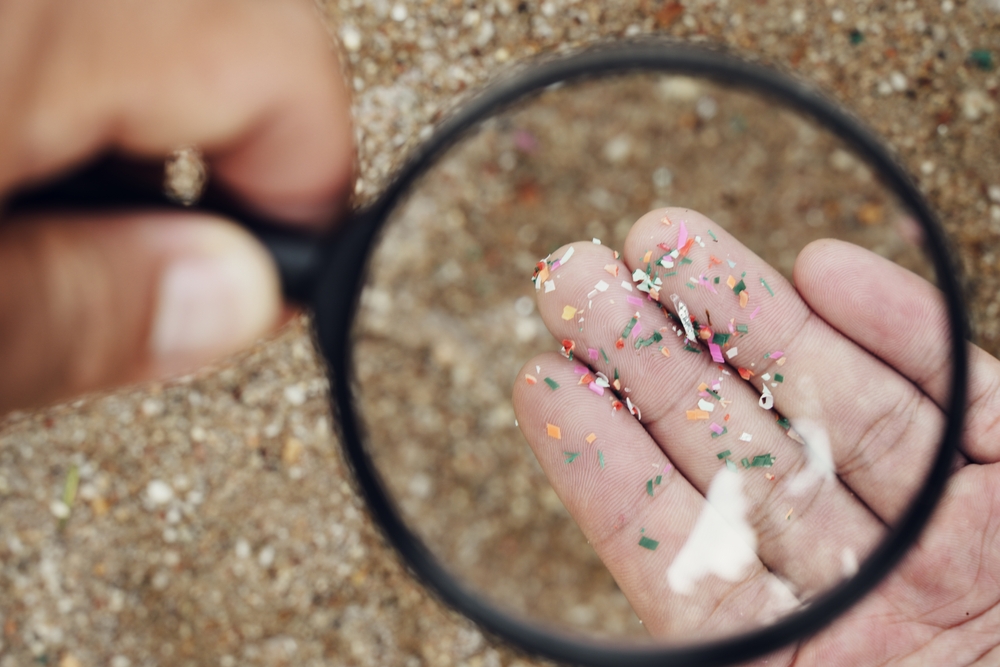Microplastic! Have you heard about this buzzword recently?
Microplastic has become the point of debate after the recent discovery that reported the presence of microplastics in breast milk. Before this, the presence of microplastic was reported from other strange sites as well.
Let’s explore this in detail and see what’s microplastic and why it’s such a big deal!
Table of Contents
What is Microplastic?
Microplastic just as the name says is any small plastic piece that is less than 5mm or 0.2 inches in size.
We often assume that these tiny plastic pieces are the consequence of plastic pollution.
When it comes to the source, microplastics are probably originating from different routine things or products.
From tires to tiles and even plastic pellets, synthetic clothing, cosmetic products, plastic bottles, and bags, all of which are the major contributors of microplastics. Thus, microplastics are everywhere and can’t be avoided, said the renowned medical practitioners from Kutiyana Memon Hospital Karachi.
What does Microplastic do to Our Health?
Being this common, have you ever wondered what microplastic does to our health?
Well, the bad part about microplastic is that it is linked to many health problems in humans. The presence of microplastic is linked with oxidative stress and inflammation in human bodies which once chronic can take a toll on human health. The presence of microplastic also impacts reproductive and hormonal health.
Not only this, but microplastics tend to provide attachment surfaces to many disease-causing germs. For example, a recent study reported the presence of cholera bacteria on microplastic surfaces rather than natural surfaces. These pathogens colonize the surface of microplastic and then tend to cause health problems.
The side effects of microplastic are many and can vary from person to person but by all means, it stays harmful to our overall health. So, microplastics tend to be harmful to human health as well as to animals’ health.
Another thing about microplastic is that this is not biodegradable which means that it can’t be destroyed. So it keeps on traveling long distances.
Recent Discoveries on Microplastic
Microplastic is everywhere. It’s everywhere. This is even a part of the foods we are consuming. The house dust in our homes contains microplastic. So, this remains unavoidable.
Recently, a shocking discovery created all the buzz by reporting the first-ever case of microplastic in breast milk. Before this, microplastic was also found in the fetus which led to further investigations.
According to the top reviewed gynecologist in Lahore, Dr. Zobia Jawad “Before the discovery of microplastic in breast milk, his presence of microplastic in the unborn fetus was called a matter of great concern.” Microplastic was detected on both the maternal and fetal sides of the placenta as well within the fetal development membrane. Scientists assume that the number of microplastic can be much higher than analyzed. This made me plan further experiments!
Microplastic in Breast Milk – A Recent Discovery
The previous discovery of microplastic in the placenta led to another research that unveiled new mysteries. Now we found microplastic in breast milk!
This recent discovery confirmed the presence of microplastic human breast milk for the very first time. The study was published in polymers in which breast milk samples from 34 women were analyzed for the presence of microplastic. Out of 34 samples, microplastic was found in 26 samples. These microplastic particles were further classified according to their sizes, colors, dimensions, and composition.
The size of these particles was from 2-12µm and it was composed of polyethylene, polyvinyl chloride, and polypropylene. This microplastic is a part of paints, cosmetics, coatings, and adhesives. This data from the same research was also analyzed against other parameters such as the mother’s consumption of plastic packaged food items etc. but no significant difference was revealed.
Though the health impacts of microplastic on infant health are not confirmed. However, scientists suspect that these microplastics can be associated with long-term damage to fetal health, particularly the immune system.
This was the first ever research on microplastic in breast milk but this raised concerns about infant health because breast milk is considered a whole food for babies. There are many proven breast milk benefits however, such discoveries raise potential concerns on infant health which further needs to be investigated.
How to Overcome Microplastic Pollution?
Microplastic in the placenta and now microplastic in breast milk, all of these discoveries from unusual places are raising concerns about human health.
But living in a modern world we know that it is nearly impossible to prevent our exposure to microplastic. It’s unavoidable. However, you can play your role in controlling plastic pollution by following these simple and easy steps:
- Go for eco-friendly or sustainable clothing rather than synthetic ones
- Avoid plastic items that are meant for one-time use
- Go for paper bags instead of plastic ones
- Bring your fabric bag while shopping
- Use refillable water bottles rather than plastic ones
- Go for glass or bamboo straws
- While buying cosmetics, choose plastic-free items
- Don’t heat food in microwaves because these containers leach plastic
- Make vacuuming and dust removal a regular practice
- Use public transportation rather than private ones to minimize tire erosion which is a leading cause of plastic pollution.
All of these can help you to control plastic pollution and play your part in environmental sustainability. While avoiding plastics and other pollutants, also make healthy lifestyle choices to protect your health. Eat well, drink a lot of water, consume natural foods, keep moving, focus on your sleep and immunity, and so on. Further, never miss your routine health checkups to keep an eye on ongoing changes in your body.
You can consult the best medical specialists in Lahore via Healthwire to make wise decisions regarding your health.
